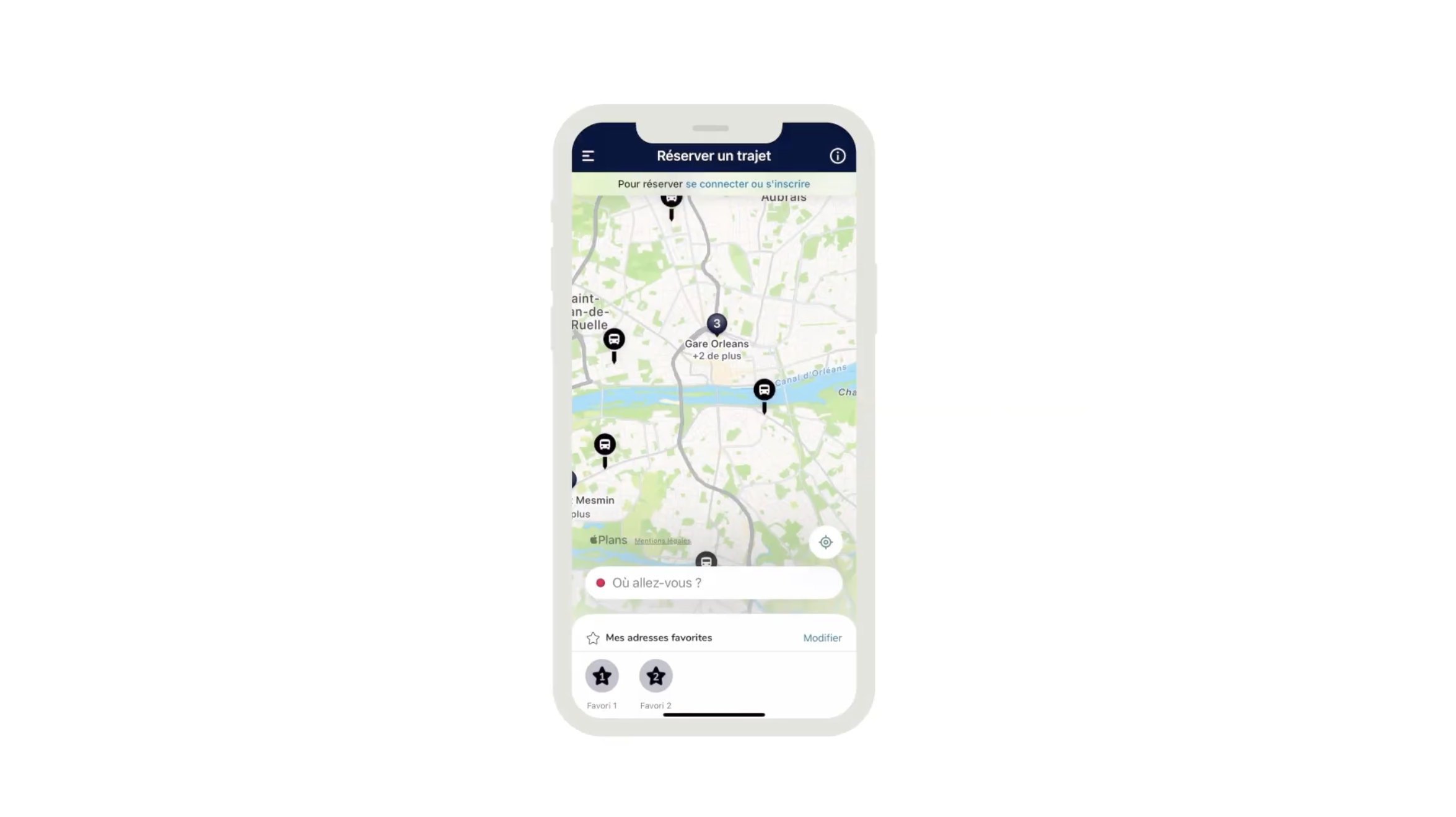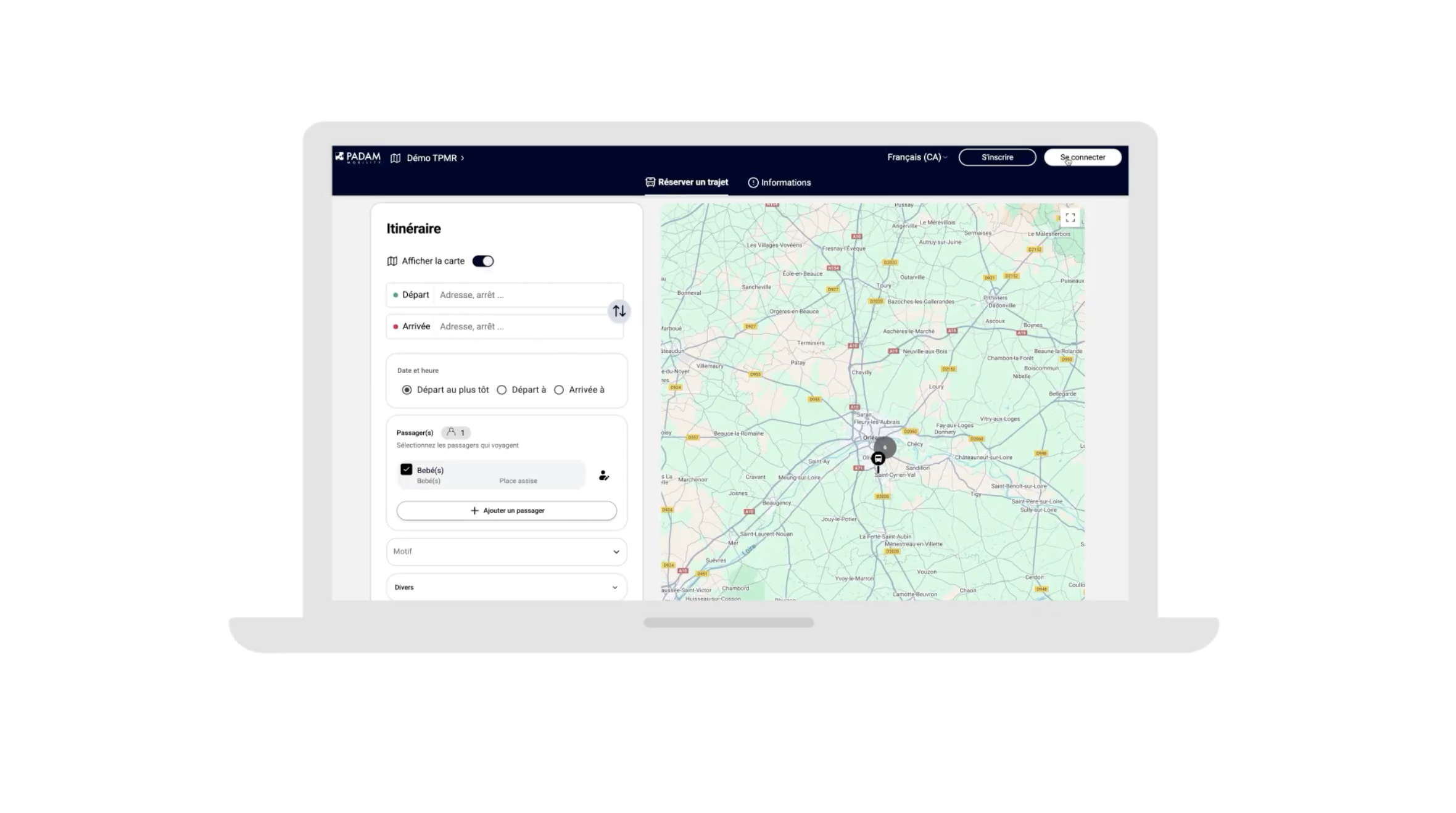Demand-Responsive Transport made easy with Padam mobility
Padam Mobility offers Demand-Repsonsive Transport solutions where artificial intelligence is used to optimise and make rides more flexible for both the driver and
the passenger.

Our interfaces
The principle of Demand-Responsive Transport
The main objective of Demand-Repsonsive Transport is to offer streamlined transport, so that supply is intelligently
adapted to demand. DRT is presented as an alternative to the private car or taxi, with the aim of meeting different requirements with optimised shared vehicles. DRT allows real savings, while offering better access to mobility and having
a favourable impact on the environment.

Who can set up the Demand-Responsive Transport?
DRT solutions are adapted to many sectors and tend to develop more and more.
Several types of clients use the services of Padam Mobility:
- Private companies;
- Public authorities;
- Transport operators;
- Consulting firms and project owners
Demand-Responsive Transport: for whom?
Demand-Responsive Transport is a very flexible mode of transport. It adapts perfectly to the different publics and to the different use cases:
- Paratransit ;
- Serving the rural and peri-urban areas with little or
no public transport service; - School transportation ;
- Transport of employees or serving business areas.
- Serving the first and last kilometres to complete an existing fixed network;
- Off-peak hours transport service (e.g. bank holidays,
or at night); - Private shuttles

Demand-Responsive Transport is flexible and can operate in different configurations:
in line (fixed or virtual) or in zonal (free-floating, multi-zones or feeder)
The different configurations of
Demand-Responsive Transport
The DRT software:
an essential tool for the good management of its Demand-Responsive Transport service
The objective of any good DRT software is to facilitate the use of the service while simplifying its management and providing real-time, reliable and complete information.
It must be able to facilitate the users' experience in their booking and travel, the drivers' experience in their service,
and the operators' one in their operation management.
As a true management and monitoring tool, the DRT software must make it easy to compile statistics to adapt the solutions to the needs and continuously improve service.

The DRT software: how does it work ?
The principle of the DRT software is very simple. It takes the form of a a suite of booking interfaces for users (application, website, interface for call center), a navigation interface for drivers and a management interface for operators.
- When a passenger wishes to book a ride, he/she simply needs to go to his/her preferred booking interface (application, service website) or call the booking centre. He/she must then enter or communicate the desired ride, date, number of passengers, departure and arrival times.
- The driver receives on his/her navigation interface (mobile or tablet application) a dynamic roadmap as it evolves in real time according to bookings and itinerary optimisations calculated automatically by several algorithms.
- The management interface allows the configuration, analysis and monitoring of data relating to the service: geography, bookings, driver shift, lines, etc.

Padam Mobility DRT software is tailor-made for a 100% customisable service
Padam Mobility:
flexible and intelligent dynamic DRT solutions
Padam Mobility's DRT solutions offer many advantages, especially when compared to traditional market players:
- The possibility to book at the last minute, or to anticipate for several hours or even several days;
- Taking into account the itineraries, schedules and loading rates of the vehicles to optimise each ride;
- Taking into account traffic conditions and hazards to optimise itineraries;
- Complete passenger information (arrival time at destination, traffic conditions, vehicle position
in real time, etc.)

Padam Mobility DRT's features
Padam Mobility DRT software enables the implementation of DRT services that complement existing fixed networks without competing with them. With "multi-territories" feature, it makes it possible to manage several zones on the same territory, or even several territories at the same time . Furthermore, it can be integrated with most of the payment systems on the market, making it easy to set up and accessible.
































